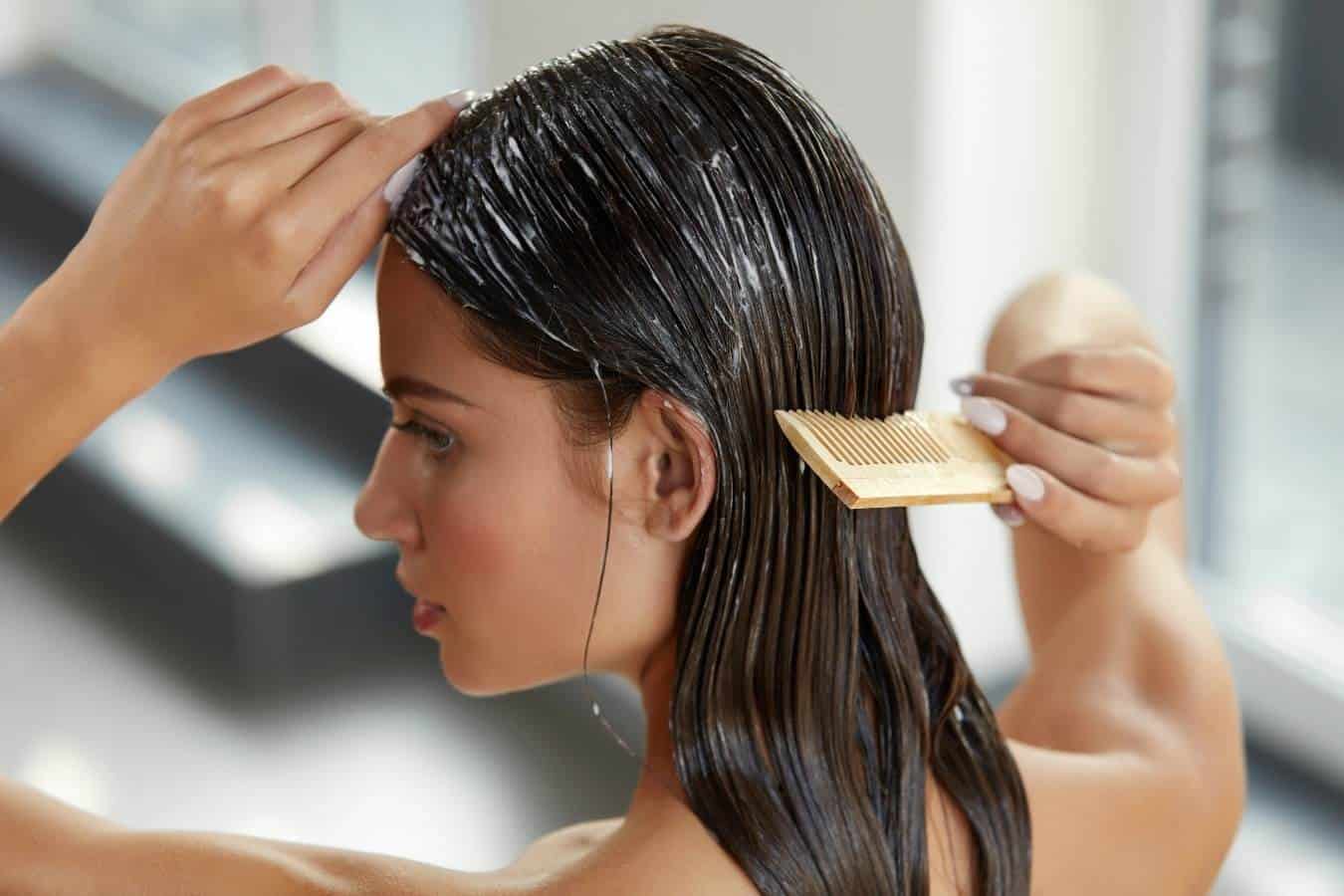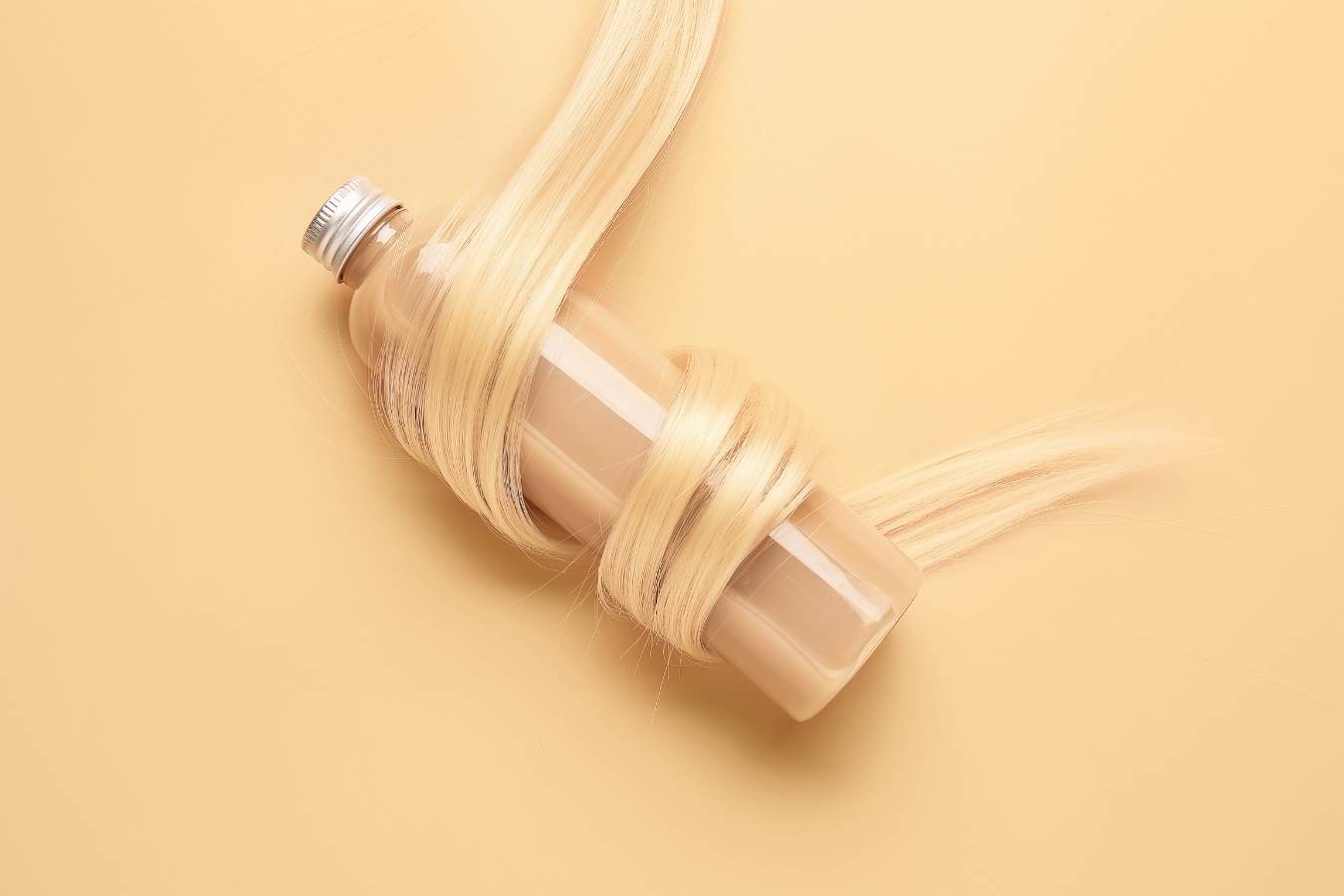If your hair is feeling limp, heavy, or flat, then it could be that it has become weighed down by conditioner. In this article, we will examine why hair gets weighed down by conditioner and how to fix it.

Hair can get weighed down by conditioner when it is applied to the roots. Roots produce the natural oil sebum to keep moisturized, so they don’t actually need additional conditioner. They are the newest healthiest parts of your hair strand.
What Does Conditioner Do To Your Hair?
Conditioner is a must-use hair care product and one you should not leave out of your regimen.
Hair can become damaged by the weather, heat styling, and other external influences. Over time, it can lose moisture.
Conditioners are blended with nutrients that penetrate the core of the hair and strengthen hair from the inside. It smooths every hair and replenishes gaps caused by damage.
While this product smooths damaged areas of hair on the outside, it also captures damaging radicals inside the hair. This means the hair is less susceptible to breakage and is more nourished.
The smooth surface created by conditioner means hair is shinier and reflects light better.
There is also reduced friction as hair can flow more easily resulting in less damage to the hair.
Using conditioner means hair is more manageable and easier to style, which reduces any subsequent damage caused by styling.
Why Does My Hair Get Weighed Down by Conditioner?

There are a few mistakes you may be making which are contributing to your hair getting weighed down by conditioner:
Applying Conditioner To The Roots
Your scalp produces a natural oil called sebum, so you don’t need to condition the roots. The roots are the youngest and healthiest part of your hair so they will have minimal damage.
You just need to apply conditioner to the ends of your hair, preferably to the last 3 inches, depending on the length. This will be the most damaged and driest part.
Too Much Conditioner
Using too much conditioner can result in weighing down your hair-particularly if you have fine hair.
As a rule of thumb, use about one or two quarter-size dollops, depending on the length and thickness of your hair.
If you have a lot of hair, or very thick hair, you may need a little more than this.
Using The Wrong Products
Using the wrong products for your hair could be contributing to weighing it down. If your hair is color-treated, use a product for color-treated hair.
If your hair is fine, use a lightweight conditioner that won’t weigh it down.
Try to avoid using products that claim to thicken your hair as they often contain waxes and filler which can be drying.
Time
Leaving conditioner in your hair for too long can cause it to feel heavy and weighed down. Two to three minutes is enough time for the conditioner to do what it needs to do, then rinse it out.
Switch It Around
Every so often tries conditioning first and shampooing second.
Even after you rinse the conditioner out, there is always a trace of it left behind to weigh down your hair.
Shampooing your hair after you condition means your hair will still get the benefit of the conditioner but have a little more volume without any residual conditioner left behind.
Not Clarifying Regularly
Product build-up can weigh hair down.
Even if you use silicon-free products, you can still experience build-up. How often you clarify depends on a few factors which include:
- co-washing instead of using shampoo and conditioner separately
- using products that contain silicones or waxes
- if you have hard water
- if you use a lot of haircare products
If any of these factors pertain to you, it might be necessary to use a clarifying shampoo once a week. Otherwise once or twice a month should be enough.
Lacking In Protein
If your regular routine has little protein involved, or you’ve been applying rich conditioners or deep conditioners often, the heaviness you are experiencing could be a result of a lack of protein.
If this is the case, doing a protein treatment should help.
Signs Conditioner Is Weighing Down Your Hair

There are signs you may notice that your hair is weighed down by conditioner. These can include:
- Roots appear flatter than usual
- Roots look wet or oily
- Roots feel sticky.
- Hair literally feels heavy.
- Hair is less voluminous than normal
And specifically for the curly-haired among you:
- Waves are limp instead of bouncy
- Waves start lower on your head than usual.
- Curl pattern is than it used to be.
To spot the signs, you need to be aware of what is ‘normal’ for your hair. Pay close attention to your hair so you are in tune with it.
It might be helpful to take photos or make notes of what you observe.
How To Fix
There are plenty of things you can do to combat hair being weighed down by conditioner.
Less Product
Try to be less heavy-handed when applying conditioner, especially if you have thin or fine hair. An amount the size of one or two quarters should suffice.
Lighter Products
If the conditioner you use has silicones, oils, or butters, it will weigh down your hair. Instead, choose lightweight products.
These are usually thinner and water-soluble. They tend to have no sealing ingredients (like oils and butters), which can coat the hair weighing it down.
Clarify
As previously mentioned, a regular clarifying treatment is beneficial to avoid hair becoming weighed down.
A clarifying shampoo will give a deep clean and remove any build-up of conditioner (or any other products).
Once or twice a month should be enough for this, depending on your lifestyle.
Protein Treatment
While it is important for hair to receive moisture from conditioner, it is also good to be mindful of not going overboard.
It can lead to moisture overload which results in hair feeling soft but flat.
To counteract this a protein boost is needed. You can add more protein to your haircare routine with leave-in products like conditioners and gels that contain some protein.
Now you know why your hair gets weighed down by conditioner and some helpful ways to combat the problem.
Disclaimer: This site is not intended to provide professional or medical advice. All of the content on LovedByCurls.com is for informational purposes only. All advice should be followed at your own discretion. Ingredients may change at any time so always check the product label before using. Check our full disclaimer policy here.
